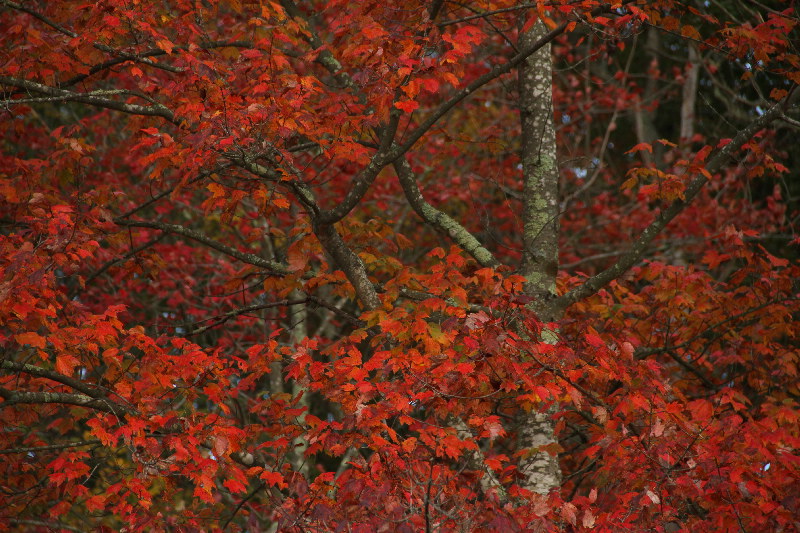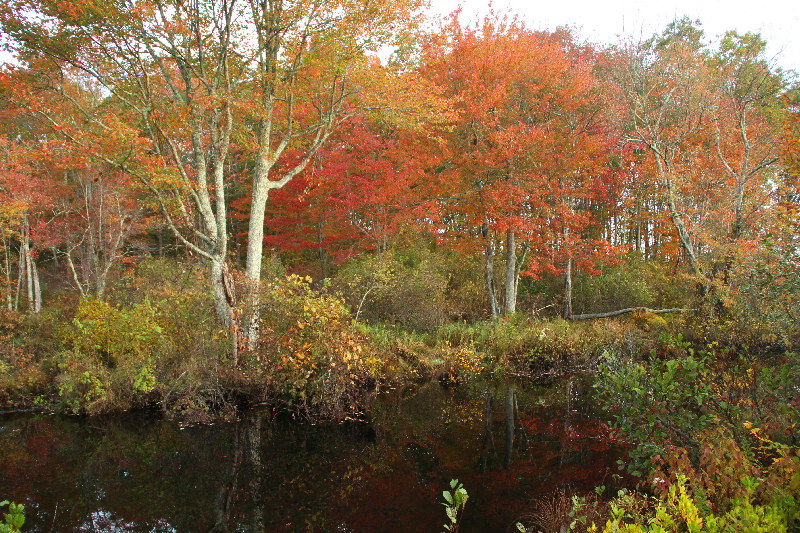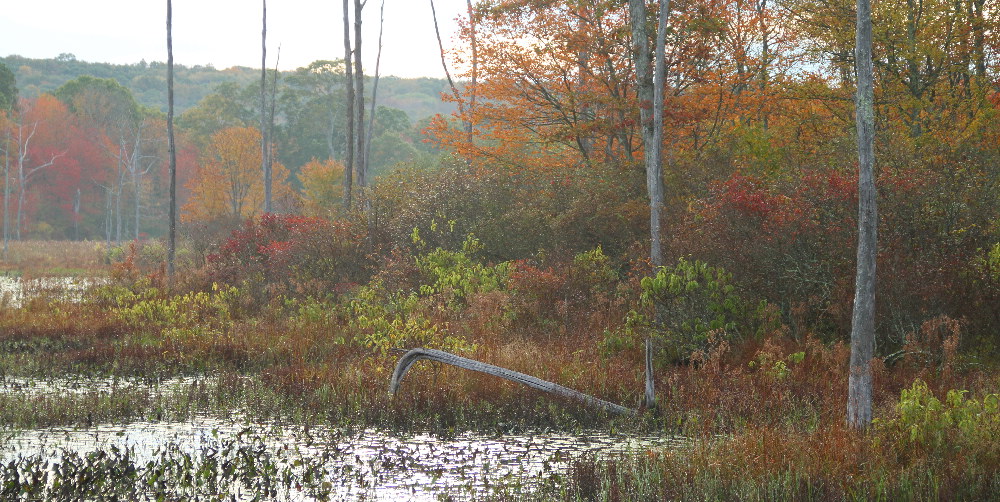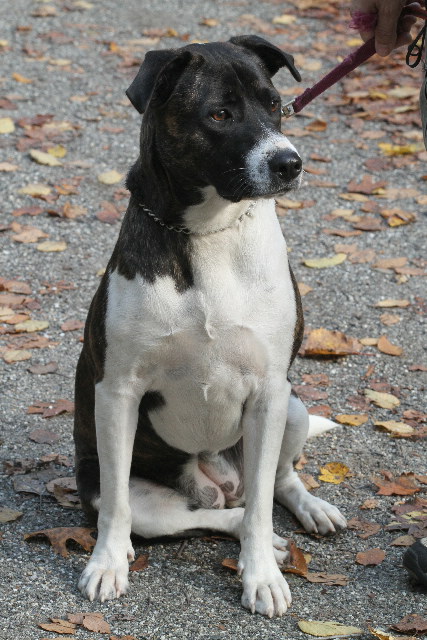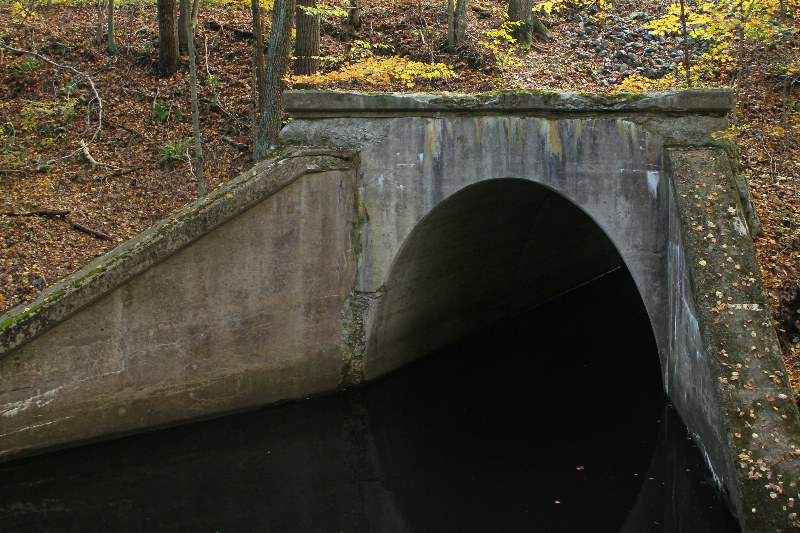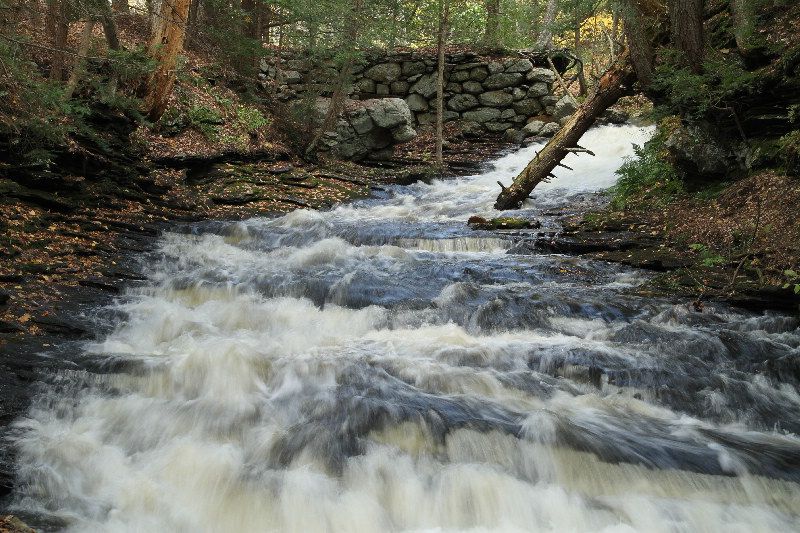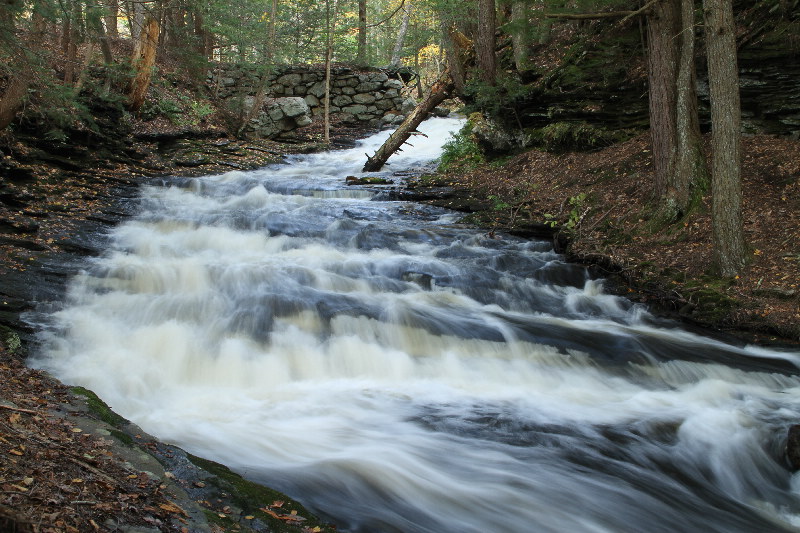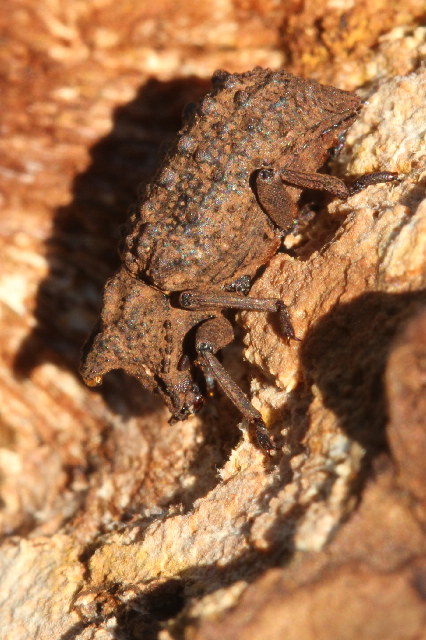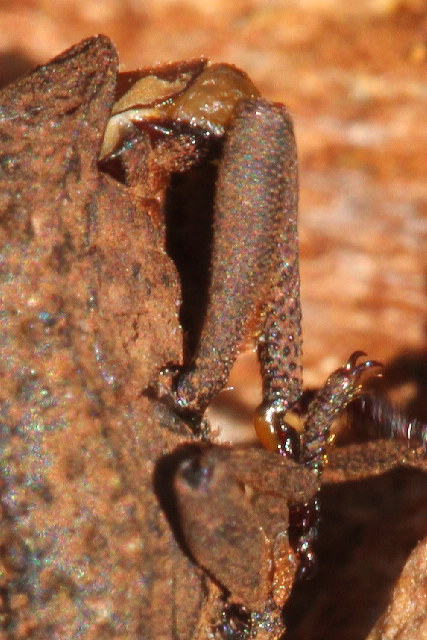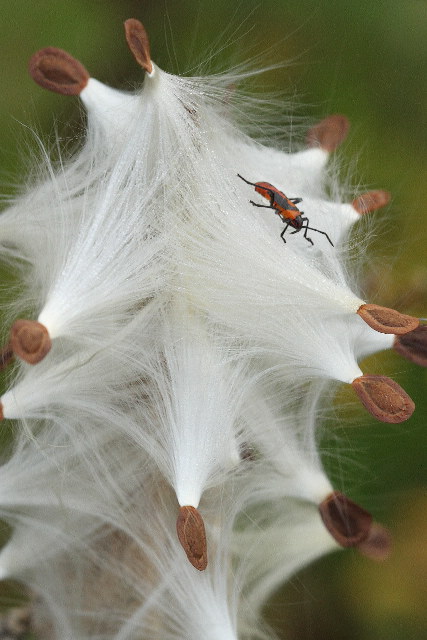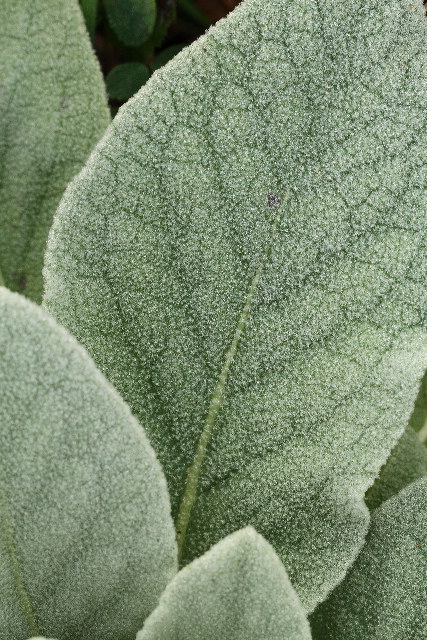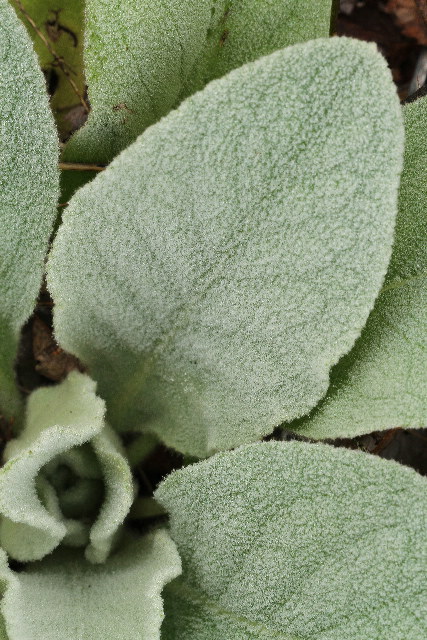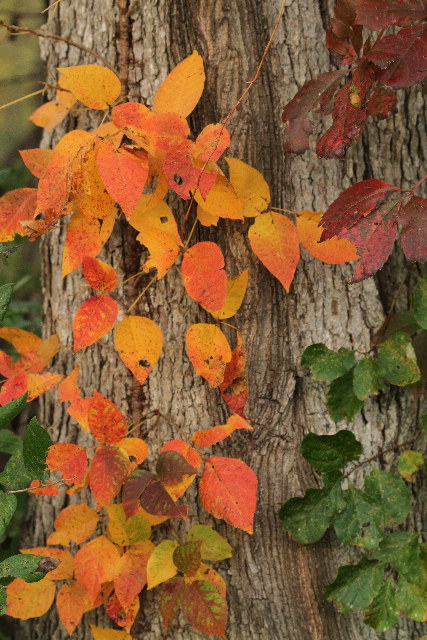Along the Air Line... 2011 - Fall, Part 3 The Air Line Trail in Eastern Connecticut - Stan Malcolm Photos |
mHome Page Stan's FlickR Albums |
October 11th. Fall colors intensifying. |
|
|
|
|
|
|
|
|
|
|
|
October 15th. Donna Koenig, Chair of the Lebanon Trail Committee, led a group of 30 nature lovers on the trail segment northeast of Route 87 near the Columbia-Lebanon town line. She started off with some trail history. |
I was along to provide tips on nature photography. |
We were joined by this alert, well-behaved dog. |
|
Quite a few participants followed me down the embankment to photograph this arched culvert. |
Also down there we saw Beech Drops (Epifagus virginiana). The Latin genus name is descriptive in this case; "epifagus" translating as "On Fagus", the genus of Beech trees. Beech Drops lack chlorophyll, living instead as a parasite on Beech tree roots. |
This Striped Garden Caterpillar (Trichordestra legitima) was on Wild Lettuce (Lactuca sp.). |
A highlight for me was finding this male Horned (or Forked) Fungus Beetle (Family Tenebrionidae, Bolitotherus cornutus) on an Artist's Conk fungus. In this photo it's hunkered down, playing dead - more specifically, looking like a crumb of woodland detritus. |
Note the paired hairy horns on the body segment just behind the head (pronotum). |
(Ignore the white strands which I think are contaminant fibers of paper towel from the container I kept it in.) Various patches of hair on the underside are curious too. Are they sensory, or do they disperse pheremones or other chemicals? |
Antennae and legs extended, the beetle is about to wander off. An introduction to the species here: http://www.insectsofwestvirginia.net/b/forked-fungus-beetles.html |
Signaling a right turn. |
Not a very good video, but interesting to watch it walk. |
Back in Hebron, a stop at Grayville Falls. |
|
|
|
October 16th. I've been reading about the Horned Fungus Beetle. According to several sources, these beetles have eversible glands at the tip of the abdomen which release noxious benzoquinones when the beetles are threatened. |
I decided to threaten the beetle. The preferred technique is to gently puff your breath onto the beetle. (According to Tom Eisner in his book, "Secret Weapons" of arthropods, the puffs must be "humid, warm, and pulsed - truly breathlike.") |
It worked like a charm. Not only did the beetle evert the glands, but it reared up (literally) off its hind legs... |
...wiped them against the glands,... |
...and carried the chemicals forward to spread them... |
...on the metasternal and femoral hair patches further forward on the underside. |
With its noxious chemicals spread out, it defecated and wandered off (wondering, if beetles could wonder, what kind of jerk had been annoying him). |
October 18th. Milkweed seeds... |
...and a nymph of a seed eating Large Milkweed Bug (Oncopeltus fasciatus). |
|
Dew on Common Mullein (Verbascum thapsus). |
The downy leaves persist through winter, protected from frost by the thick pelt of pale hairs on the leaves. In summer, the same hair protects the leaves from sunburn and dessication. |
A stray Yarrow (Achillea millifolium) leaf peeks around a mullein leaf. Yarrow leaves too persist through the winter. |
Poison Ivy (orange), Virginia Creeper (red), and Bittersweet (green) leaves entwine this tree trunk. |
